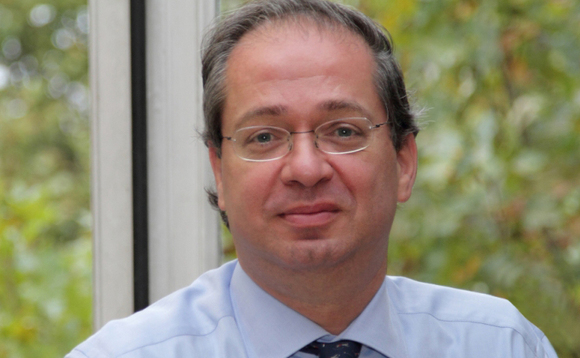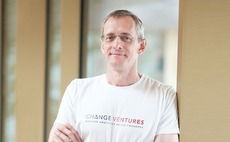
Q&A: Michel Abouchalache, Quilvest & Partners

Quilvest CEO Michel Abouchalache talks to Greg Gille about LP appetite for European private equity and shares his views on current investment opportunities
Quilvest, a private equity investor and funds-of-funds manager, raised $1.3bn in 2013, surpassing its $500m target.
Greg Gille: The amount raised by Quilvest last year significantly exceeded your annual average of the past few years. What were some of the drivers behind this uptick?
Michel Abouchalache: It was a combination of factors. The first one is clearly the markets – they were more favourable in 2013 for fundraising than in prior years. There is an increasing appetite for private equity and for risky assets in general given that fixed income has not really yielded what investors were expecting in an increasing interest rate environment. There is a flight to higher-risk, higher-return asset classes and private equity and hedge funds have been benefiting from that in the past year.
Track records are also attracting LPs, with increased visibility and most importantly record levels of distributions last year. That was especially true for our more mature fund-of-funds vintages, up to 2009. This is continuing this year with January being our best month ever in terms of distributions for the QS PEP programme.
Finally, none of our programmes have lost money in the past 14 years. We have 19 programmes and the vast majority of those will be delivering double-digit returns. Combined with increased distributions, this really reassures investors and can push them to re-up or commit for the first time.
GG: Has the renewed interest in European private equity from international investors also played a part?
MA: The rebound of European private equity was confirmed in Q4 2013 across all aspects of the industry. In terms of fundraising, LPs – in particular US institutional investors – are increasing their allocation to Europe, and not only to Germany and the Nordic countries as was mostly the case in 2012, with a renewed interest for UK-based firms as well as for Spanish teams.
LPs continue to be very selective though: while some teams are able to very quickly hit their targets, others with potential issues need much more time to fundraise than pre-crisis.
One must also bear in mind we are operating in a cyclical industry where both appetite and opportunities come and go. Clearly sentiment has improved over the past few months, but we come from very low levels; there was very little appetite, perhaps even resistance towards Europe a few months ago. We are now seeing signs of renewed interest, but this is happening slowly – and it certainly remains lower than appetite for the US at the moment.
GG: Have you noticed key changes when it comes to the demands of LPs prior to or after investing?
MA: There is clearly more emphasis on regulation, with more attention paid to being invested in an AIFMD-compliant platform. In practical terms, more investors want to be invested in on-shore platforms, domiciled in Luxembourg for instance – rather than the traditional Jersey, Guernsey, BVI, etc. We have completely migrated our platforms onshore now and are very Luxembourg-centric, with our entire back-office located in the country. More and more investors are also looking at the environmental aspect, which is something everybody is catching up with.
GG: On the direct investment side of things, how confident are you in dealflow opportunities for the coming months?
MA: The US has come back in an incredible way, with regards to both equity and debt opportunities – the market is very vibrant. We are bullish when it comes to the US and emerging markets: we believe that these markets will continue to go through the positive cycle, as much if not more than what we've seen in 2013.
In Europe, dealflow is slower but partly coming back. This is driven in part by the fact that the debt market has been slower to pick up. The banks are flooded with liquidity but the appetite to come back to the LBO market is still subdued. Alternatives of course exist and are gaining in popularity; this is clearly not a bad thing and when banks eventually come back fully, players will have access to a wider range of financing opportunities.
GG: Speaking of which, what is your appetite as a fund-of-funds for debt vehicles? And more generally, have there been key changes to your allocation strategy?
MA: We invested in a few debt vehicles after the crisis, including several distressed debt funds in 2009. This was in the US though as there were quite a few to choose from. On the other hand, we couldn't really find a lot of choices in Europe at the time. Although these vehicles are more popular in Europe right now, very few have established track records.
With regards to our private equity fund investments, we remain cautious given the increasing purchase price multiples paid for businesses – we are therefore increasingly focused on smaller funds with a unique value proposition and a history of purchase price discipline.
Latest News
Stonehage Fleming raises USD 130m for largest fund to date, eyes 2024 programme
Sponsor acquired the public software group in July 2017 via the same-year vintage Partners Group Global Value 2017
Stonehage Fleming raises USD 130m for largest fund to date, eyes 2024 programme
Czech Republic-headquartered family office is targeting DACH and CEE region deals
Stonehage Fleming raises USD 130m for largest fund to date, eyes 2024 programme
Ex-Rocket Internet leader Bettina Curtze joins Swiss VC firm as partner and CFO
Stonehage Fleming raises USD 130m for largest fund to date, eyes 2024 programme
Estonia-registered VC could bolster LP base with fresh capital from funds-of-funds or pension funds








